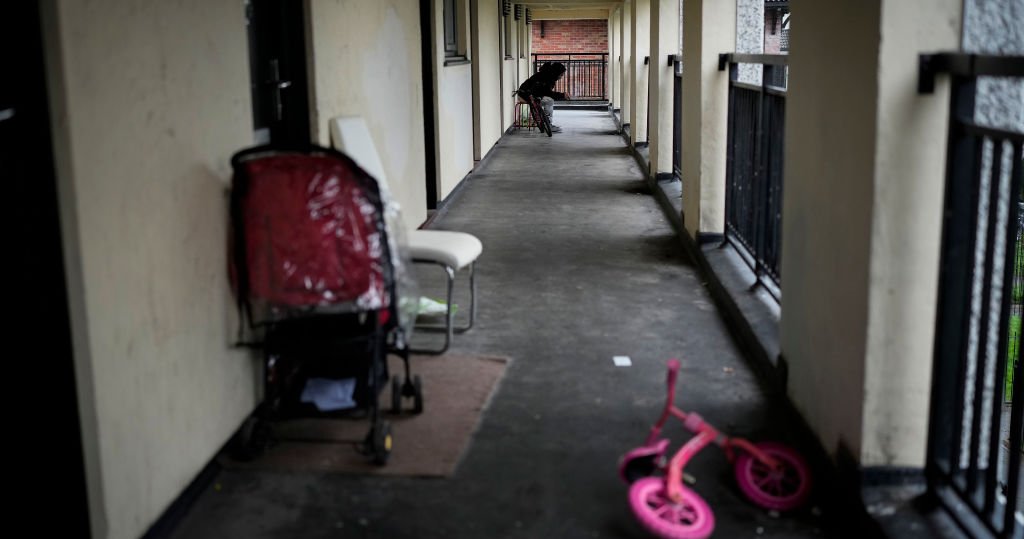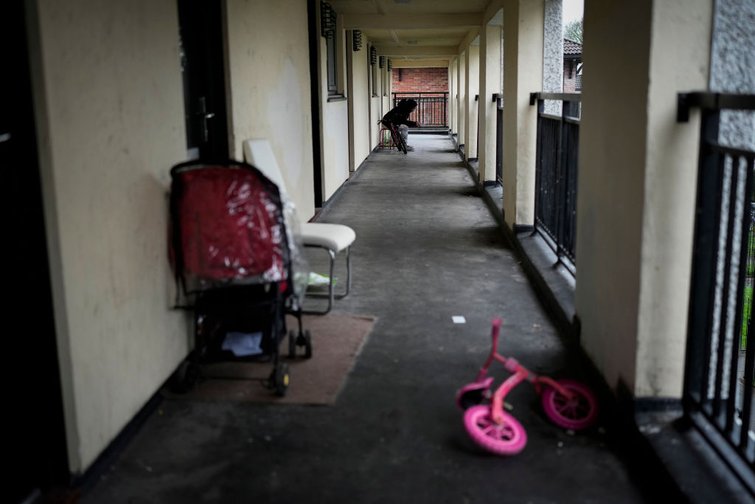
NHS doctor: Our homes are driving national health emergency
Children I treat tell me it’s ‘raining inside’ their homes. But damp and mould are just the tip of the iceberg
Children I treat tell me it’s ‘raining inside’ their homes. But damp and mould are just the tip of the iceberg

The Freehold estate in Rochdale where two-year-old Awaab Ishak died of a respiratory condition caused by damp and mould in his home
As a children’s doctor in the NHS, I see the real-life impact of the UK’s poor quality housing every day. It has become strikingly common to treat babies and children brought in with yet another chest infection, and to hear their parents lament the damp and mould in their homes.
Our housing system is undeniably making millions sick. This is particularly true for renters, 58% of whom in England live with damp, mould or excessive cold. The brutality they experience in their own homes underpins an inconvenient truth in our contemporary social fabric.
These injustices were brought into sharper focus by the death of two-year-old Awaab Ishak in Rochdale in 2020, where the coroner’s report explicitly named exposure to mould as a cause of death. Ishak’s is a tragic case, but sadly not an unusual one; children living in damp homes are nearly three times as likely to develop breathing problems.
When families go home from children’s wards and emergency departments, my farewells are betrayed by an uneasy feeling that, deep down, both the parents and I know they will be back in a matter of weeks for another sticking plaster solution. The only way to stop their child from repeatedly getting sick would be to resolve the creeping mould in their bedroom, bathroom or living room – and their profit-driven landlord won’t do that.
The government announced a sticking plaster of its own in last week’s Spring Budget: £20m for ‘community-led housing schemes’, a paltry amount of money for a policy that will fail to tackle the root cause of the crisis we face.
The surging epidemic of damp and mould has become emblematic of the inadequacy of the UK housing system, but it is just the tip of the iceberg – symptomatic of a political system that entrenches and reproduces mass illness and intergenerational disadvantage.
The public health emergency we face is much more embedded and far-reaching than many care to imagine.
Scores of homeless children and young people continue to spend their entire childhoods in so-called ‘temporary accommodation’ that is diametrically opposed to their healthy development. They, and others growing up in cold and unfit homes, are at higher risk of depression, anxiety, and poorer educational outcomes.
Meanwhile, disabled children and their families, who often require additional care and accessibility needs, are being left behind in a system that actively worsens their life chances.
But it’s not just the bricks and mortar that is harming our children’s health. Rising rents – in some cases by up to 36.8% in one year – mean parents skip meals and ration their children’s food in efforts to make ends meet. It is no coincidence that my GP colleagues are observing record numbers of cases of children suffering malnutrition.
As the impact of unconscionable rent, energy and essential food costs escalates, little to nothing is left in the tank for a flourishing childhood, let alone ensuring fundamental needs are met. The resulting social, economic and political exclusion that children are forced to shoulder sets them up for a life of precarity and missed opportunity in poor health.
The insecurity associated with renting, and the psychological violence that comes with the termination of tenancy or threat of eviction, also brings long-lasting effects. Renters age faster at a cellular level, their biomarkers persisting in a heightened state of inflammation, akin to biologically ageing an extra two and a half weeks for every year in insecure accommodation.
Our health service was never meant to deal with this immense challenge. Quality, safe, secure and affordable housing was once intended as an extension of health and social care policy – NHS founder Nye Bevan, whose brief as health minister included housing, understood this as far back as 1948.
To describe the intertwined inequities in public health, household and community economic security as a ‘housing crisis’ fundamentally misses the point. The commodification of housing has turned the domestic into a site of illness, precarity and in some cases, death, rendering it a crisis for many but not all; the poor, the marginalised and minoritised.
Yet this ‘crisis’ is a vehicle of wealth extraction which remains hugely profitable for landlords, corporate housing associations, land and asset owners, who between them enjoy record levels of wealth and power.
The so-called ‘housing crisis’ is therefore about much more than not owning our own homes. It is a type of violence, in which the spaces we live must be damp, mouldy, insecure, unsafe and impossible to afford in order to secure rampant profits. It denies futures for children before they’ve even had a chance to dream of them.
We cannot meaningfully address surging cases of unfair and avoidable poor health until radical and urgent change in the housing system becomes a reality. As a doctor, I know that diagnosis and treatment aren’t always straightforward. But the diagnosis and treatments for creating a healthy, secure, accessible and affordable housing system are clearer than ever.
Awaab’s story has shone a powerful light on the routine failings of housing associations and landlords, but glaring gaps in the safeguards of our housing system continue to undermine the health of children, families and communities. It comes as no surprise to see frustration and anger at the government’s piecemeal attempts at policy change in the private rented sector.
It's time to stop the bleeding. The government can start by ending the dangerous right-to-buy policy – 40% of former council homes sold off under the scheme are now private rentals – and banning Section 21 no-fault evictions in England, as it has for years promised and failed to do.
It must also ensure rents are frozen, not people, and hand the power over rent controls and robust enforcement of the private sector to local and regional authorities.
Taken together, these measures will ensure that private rents are never the cause of worsening health. Fixing this national emergency won’t come from tinkering, but from committing to radical and urgent transformative change. As Bevan himself put it: “We know what happens to people who stay in the middle of the road. They get run down.”
Amaran Uthayakumar-Cumarasamy is an NHS children’s doctor and member of the Medact Economic Justice & Health Group

